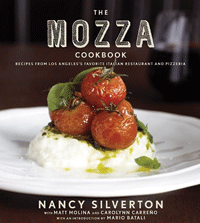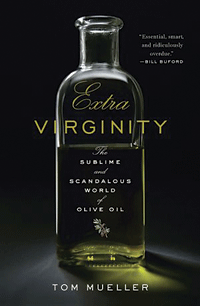Italian food is hands-down the most accessible ethnic cuisine in foodservice. Restaurants that specialize in it offer menus that seem nearly identical, offering a relative handful of traditional items customers know and love. Those that don’t can add a few strong-selling pasta and pizza dishes to a broader menu and get into the game.
Barriers to entry are low. Only basic culinary skills and kitchen equipment are required to cook this food well. The list of ingredients for most Italian dishes is so short that merely sourcing high quality products and then staying out of their way usually results in a winning dish on the plate.
The lone mystery: How is it that a handful of restaurants—using the same ingredients, equipment and cooking techniques as everyone else—turn out ethereal versions of the traditional dishes and become wildly popular in the process? We’d all like to know the answer to this question, and Nancy Silverton has given it to us in The Mozza Cookbook: Recipes From Los Angeles’s Favorite Italian Restaurant and Pizzeria (Alfred A. Knopf; $35).
We’d all like to know the answer to this question, and Nancy Silverton has given it to us in The Mozza Cookbook: Recipes From Los Angeles’s Favorite Italian Restaurant and Pizzeria (Alfred A. Knopf; $35).
She’s an owner, not the chef. But her background in baking (Silverton was the founder of La Brea Bakery) rather than cooking makes her acutely aware of the precision with which Italian dishes must be prepared if they are to become not just delicious, but transcendently so—every time.
Silverton’s luxuriously exhaustive directions tell readers exactly how to produce dishes from both Pizzeria Mozza and its next-door sibling Osteria Mozza (a holder of one Michelin star). So the book is, in effect, a two-fer.
Not that it needs a kicker, but Silver-ton gives it one. She is personally on duty most nights at the restaurant’s mozzarella bar, and her book includes a section that tells you how to set up and operate one of your own.
An added bonus: Mozza isn’t just a restaurant that was hot way back when. It’s hot right now, ranking as perhaps the toughest reservation to score in all of L.A. If you want to serve the same kind of magical Italian food as these two restaurants, The Mozza Cookbook will show you how you can. Silverton reveals exactly which brands of product Mozza uses in many of its dishes. You’ll be thankful for her advice on olive oil after getting a load of what author Tom Mueller uncovered while gathering information for his terrific book, Extra Virginity: The Sublime and Scandalous World of Olive Oil (W.W, Norton; $25.95).
Silverton reveals exactly which brands of product Mozza uses in many of its dishes. You’ll be thankful for her advice on olive oil after getting a load of what author Tom Mueller uncovered while gathering information for his terrific book, Extra Virginity: The Sublime and Scandalous World of Olive Oil (W.W, Norton; $25.95).
We’d like to say restaurant operators will have trouble putting this highly readable book down, but we think most RH readers will be putting it down just a few pages in.
That’s because they’ll be heading out to their restaurant’s storeroom for a closer look at the label of the olive oil they currently buy. Then they’ll be double-checking old invoices to see how much they’ve been paying for that oil, because Mueller lays out page after page of facts that document how much bait-and-switch and downright fraud goes on at the high end of the olive oil industry. Names are named; you may find out more about the olive oil you’re buying than you wish to know.
But there’s a lot more to this book than just the exposé angle. We doubt there are many RH readers who won’t find Extra Virginity a great read, whether their restaurants are big users of olive oil or not. Like The Mozza Cookbook, this one is highly recommended.
An inside look at great Italian food
0 comments
Hide comments




